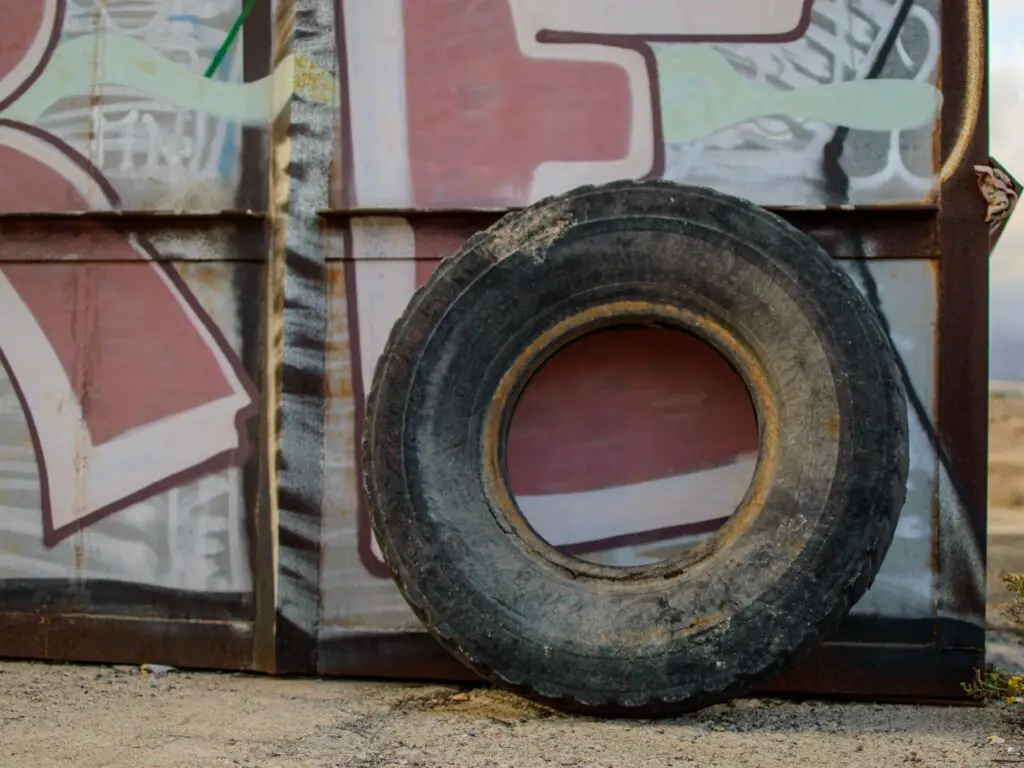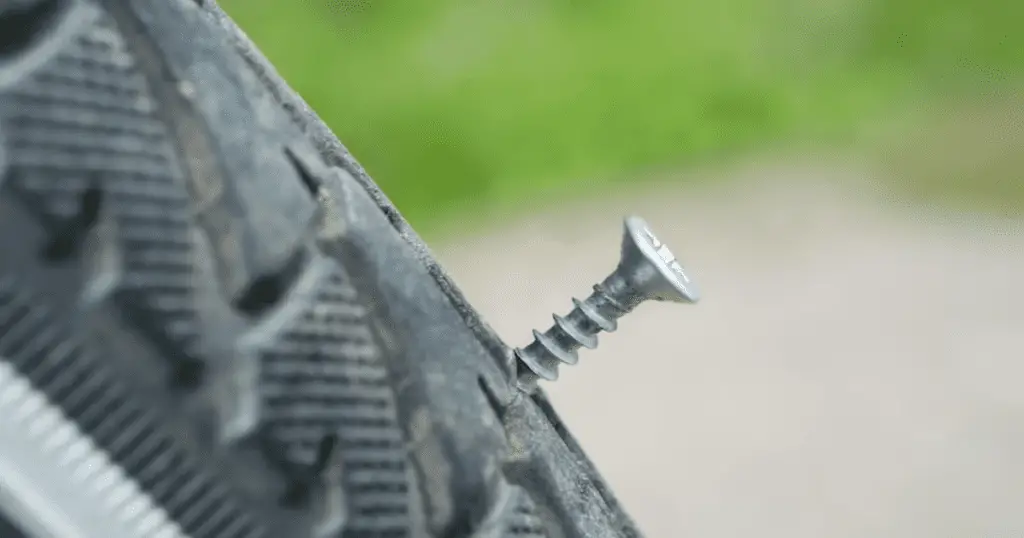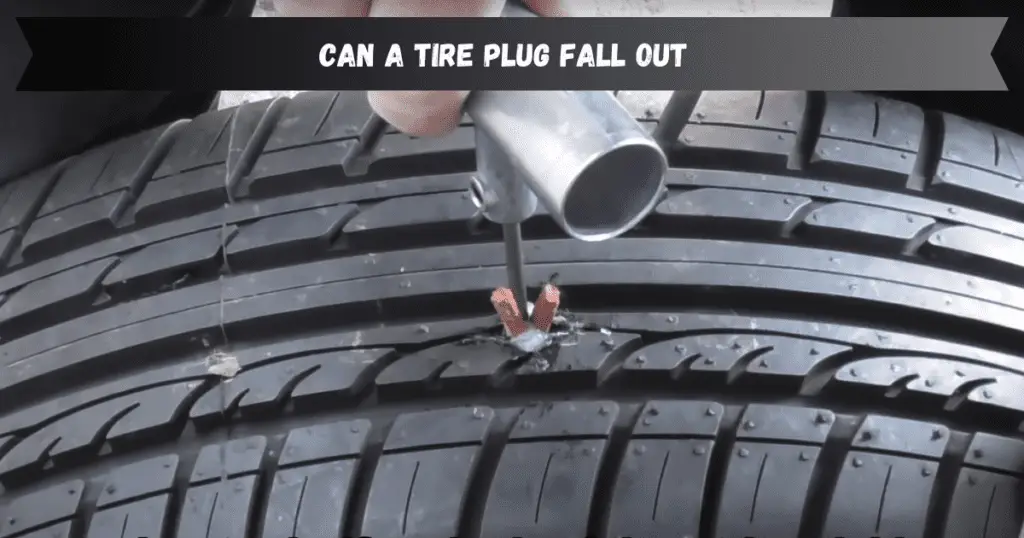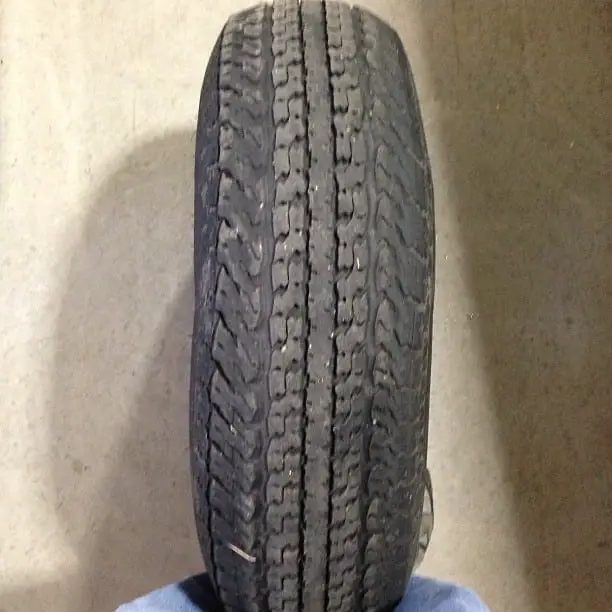Round and rubber, tires faithfully roll down the highway. But sometimes, the tire tread mysteriously disappears, leaving confused drivers with shredded rubber remnants. What malevolent forces prey upon our tires, shredding their treads into snarled nests of steel belt confetti?
By understanding what causes tires to shred and how to prevent it, you can confidently keep your tires rolling with treads intact. Let’s get to the bottom of this shredding situation!
What Causes A Tire to Shred?
What Causes a Tire to Shred? A variety of causes lead to tire shredding, including:
Insufficient Tire Pressure
- Air pressure, measured in PSI (pounds per square inch), allows the tire components like rubber, fabric, and composites to function properly
- Too low pressure leads to underinflation, which causes excessive heat buildup and strain on tire structures
- Overinflation from too much pressure also places more stress on tire materials
- Maintaining the vehicle manufacturer’s recommended inflation pressure helps avoid temperature and load issues that accelerate tire damage
Excess Vehicle Load
- Every tire has a maximum load-carrying capacity based on its size and construction
- Overloading the vehicle places more weight on the tires than they are designed to handle
- Too much weight, especially with worn treads, causes the tires to over-flex and drag on the pavement
- This continual heavy strain separates internal components and leads to tearing and shredding damage
Road Hazards
- Potholes, large cracks, debris impacts, and high curbs transmit tremendous force into the tire structure
- Impacts that exceed the tire’s flex ratings can instantly rupture rubber and rip materials
- Even smaller cuts from road hazards gradually weaken the tire over time with rotation flexes
- As tires age and tread depth decreases, they become more susceptible to impact damage
Punctures From Debris
- Small sharp objects like nails, glass shards, rocks, and metal scraps easily puncture through the tire as you drive over them
- Unnoticed, these objects lodge into the tire and as you drive, gradually allow air to escape
- The lower pressure causes unsafe handling conditions, eventually shredding the tire from the inside out
- By the time you notice issues, irreversible internal damage has already begun
Wheel Misalignment
- Wheels that are mounted out of proper specification alignment angles cause excess tire wear issues
- Too much positive or negative camber angle will severely scrub the tire shoulders when rolling
- This perpetual rubbing action generates extreme heat and friction that degrades the tire materials
- Tire components lose integrity and shred more quickly due to continual overwork from misalignments
Undetected Air Leaks
- Even the tiniest unrepaired puncture will slowly bleed out air over time while driving
- Gradually lowering PSI causes the tire to over-flex with less internal support as you drive
- Eventual lack of sufficient pressure leads the tire to overheat and shred apart
- Catching and repairing punctures early prevents pressure loss and delayed damage
Worn Suspension Components
- Components like ball joints, bearings, and bushings cushion impacts and stabilize wheels
- But these wear out over years of service and begin failing at their job of dampening forces translated to the tires
- The additional unchecked motion placed directly on tires strains materials until they tear apart
- Replace aged suspension components before they deteriorate further and destroy tires
What Causes a Tire to Shred? Stay vigilant against these common causes to keep your tires rolling with treads intact!
Symptoms that Your Tire is About to Shred
Watch for these signs of What Causes a Tire to Shred? :
- Visible cracks in tread grooves or sidewall
- Bulges or bubbles forming on the tire sidewall
- Separating or lifting tread sections
- Encountering frequent punctures and damage
- Irregular “choppy” wear patterns forming on shoulders
- Exposed steel belts visible where the tread has worn down completely
- Vibrations emerging at highway speeds
- Tire or wheel rim damage from impacts
- Uneven cupping wear indicating alignment needs
Catching these symptoms early allows you to replace the tires before catastrophic tread shredding occurs. Don’t chance it!
Dangers of Running on a Completely Shredded Tire
Driving on what’s left of a fully shredded tire is extremely dangerous. Hazards include:
- Blowouts as weakened sidewalls rapidly fail
- Severe handling instability and loss of control
- Braking distances increased without tread grip
- Penetration danger from exposed steel belts
- Additional vehicle damage from loose flying tread
- Increased chance of collision or leaving the roadway
Get to a safe place to change the shredded tire or call for towing immediately. The remaining tire carcass fails rapidly.
Can You Repair a Slightly Shredded Tire?
If caught extremely early before complete failure, it may be possible to repair some shredded tire damage. Options include:
- Plugging shoulder punctures and sidewall tears
- Patching repairable tread punctures
- Applying internal patch-plugs for larger tread injuries
- Installing protective tire sealants to slow air loss
- Using rubber adhesive to re-bond lifting tread areas
- Sealing hairline cracked grooves with tire sealant
But once significant tread loss, belt detachment, or sidewall failure occurs the tire is too far gone. Full replacement is the only option. Don’t take risks with makeshift repairs.
How Far Can You Drive on a Slightly Shredded Tire?
If you catch tread shredding in its early stages before complete failure, What Causes a Tire to Shred? here are guidelines on drivable distances to seek tire replacement:
- Separating shoulder tread – 10 miles max
- Sidewall tear under 1 inch – 25 miles max
- Exposed steel belt under 2 inches – Drive 5 miles, reduce speed
- Bad wheel vibration – Do not drive, change the tire
Any signs of air leakage, bulges, cracking, or impaired handling mean do not drive at all. The tire could rapidly fail and shred further without warning. Call for tire service assistance immediately.
Why You Should Not Drive Over Shredded Tires in the Road
While it may be tempting to drive over rubber remains of shredded tires on the road, here are risks to avoid them:
- Steel belts can penetrate tires causing blowouts
- Tread strips can wrap around axles and brakes
- Debris can become trapped between wheels and chassis
- Large chunks can ricochet off vehicles and objects
- Shreds can damage wheel rims
- Hydroplaning risk increases without tread contact
- Visibility is reduced if spraying up onto the windshield
Change lanes or significantly reduce speed until clear of tire shred hazards in the roadway. Don’t put your tires at risk!
Options for Disposing of Old Shredded Tires
Shredded tires past any hope of repair require proper disposal. Common methods include:
Tire recycling centers – Many accept old tires for a small fee and shred them for recycling purposes
Automotive service shops – May take limited shredded waste tires to send out for recycling
Scrap yards – Sometimes accept shredded tires as salvage material
Authorized waste collectors – Some waste management companies organize tire collection events
Retail tire shops – Often accept comparable shredded waste tires when purchasing replacements
Check regionally for authorized recycling and disposal options. Never illegally dump shredded tires – they provide ideal breeding grounds for disease-carrying mosquitoes!
Beneficial Uses for Recycled Shredded Tires
Innovative recycling methods convert shredded waste tires into valuable products:
Tire-derived fuel – Shredded tires can be compacted into tire-derived fuel pellets and bricks which burn cleaner than coal with less ash.
Rubber mulch – Coarsely shredded tire rubber makes long-lasting landscaping mulch and playground surfaces.
Road paving material – Mixing tire rubber into asphalt improves durability and reduces road noise.
Drainage fill – Shredded tires work well as lightweight drainage aggregates in infrastructure projects.
Rubber flooring – Stamped and colorful shredded tire rubber is made into gym and barn flooring.
ULHDPE plastic composite – Melting shredded tires with plastic makes durable composite railroad ties, pallets, and marine pilings.
These innovations generate new life and value from old used tires!
How Are Tires Shredded and Recycled?
Specialized shredding and recycling processes are used to handle scrap tires, including:
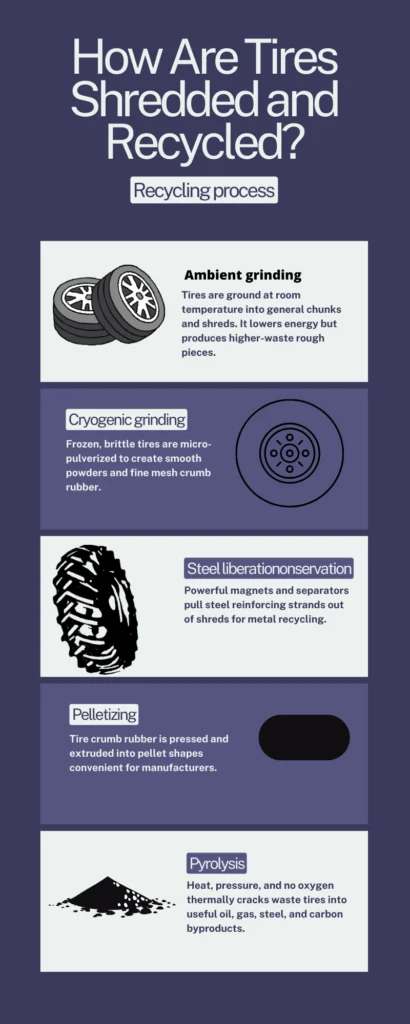

Ambient grinding – Tires are ground at room temperature into general chunks and shreds. It lowers energy but produces higher-waste rough pieces.
Cryogenic grinding – Frozen, brittle tires are micro-pulverized to create smooth powders and fine mesh crumb rubber.
Steel liberation – Powerful magnets and separators pull steel reinforcing strands out of shreds for metal recycling.
Pelletizing – Tire crumb rubber is pressed and extruded into pellet shapes convenient for manufacturers.
Pyrolysis – Heat, pressure, and no oxygen thermally cracks waste tires into useful oil, gas, steel, and carbon byproducts.
Understanding these key tire recycling steps helps us imagine what happens to shredded tires after their roadgoing days end. From shredded and lifeless, tires transform into beneficial new forms!
Frequently Asked Questions
Let’s review the basics:
What is a shredded tire?
A shredded tire has catastrophically failed, separating and detaching the tread section from sidewalls and belts. It breaks into jagged remnants barely resembling a tire.
Can you drive on a shredded tire?
No, significant tread loss or detachment means the tire has failed and is unsafe to drive on further. Stop immediately and replace the tire.
What causes shredded tires?
Common causes are under-inflation, worn tread, curbing, impacts, excessive speed and load, loose wheels, misaligned axles, and running past tire age limits.
What can shredded tires be recycled into?
Popular uses for recycled tire shreds include tire-derived fuel, rubber mulch, incorporation into asphalt and auto parts, steel reclamation, playground surfaces, rubber flooring, and more.
Are recycled shredded tires safe?
Yes, technical advances have improved the ability to recapture valuable components from tire shreds, while eliminating pollution risks from old stockpiles. Proper recycling makes them beneficial again.
Can tires be turned into oil?
Through pyrolysis and similar thermal decomposition processes, the hydrocarbons in tires can be broken down into useful fuel oils, gases, carbon, and steel.
Conclusion
What Causes a Tire to Shred? While startling when encountered, understanding what causes tires to shred reveals ways we can prevent it through diligent maintenance and replacement. Keep tires properly inflated, aligned, and rotated. Fix any damage promptly and discard aging tires prone to failure. Though shredding still inevitably occurs randomly, safe habits reduce risks on the road. Through responsible recycling, shredded tires find new purposes rather than waste. Stay conscious of tire condition, avoid hazards, and keep treads where they belong – intact on your vehicles!

